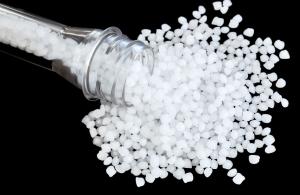
Choosing the Right Additive When Manufacturing Biodegradable Plastic
Understanding Biodegradable Additives
Biodegradable additives are substances incorporated into plastic during manufacturing. They work by attracting microbes that break down the plastic into harmless organic matter. Different types of biodegradable additives exist, each with unique properties and functionalities.
Choosing the Right Additive: Key Considerations
Selecting the ideal biodegradable additive requires careful consideration of several factors:
Type of Plastic: Different biodegradable additives are compatible with specific types of plastics. Ensure compatibility between the chosen additive and the plastic resin being used.
Environmental Conditions: Consider the environment where the plastic product will end up. Some additives require specific conditions like UV light or high temperatures to initiate degradation.
Regulatory Compliance: Stay informed about local and international regulations regarding biodegradable materials. Choose an additive that meets these regulations to avoid legal issues.
Product Lifecycle: Evaluate the product's lifespan. Faster degradation is desirable for short-term applications like single-use packaging. Conversely, long-lasting products may require additives that maintain material integrity during use.
Cost Considerations: Biodegradable additives can vary in cost. Factor in the additive's cost alongside its effectiveness and suitability for the application.
Implementation Steps for Biodegradable Plastic Production
Transitioning to biodegradable plastic production involves several key steps:
Conduct a Material Audit: Identify all the plastics used in the manufacturing process and assess their compatibility with biodegradable additives.
Rigorous Testing: Thoroughly test the chosen additive with the plastic resin to ensure compatibility, performance, and complete biodegradation under the desired conditions.
Partnerships with Suppliers: Collaborate with reliable suppliers who specialize in biodegradable additives and can offer technical expertise.
Stakeholder Education: Educate all stakeholders involved in the supply chain, from production staff to consumers, about biodegradable plastics and their proper disposal.
Reporting: Maintain clear records of the biodegradable additives used and their performance to demonstrate your commitment to sustainability.
A New Alternative: Pristine®
Pristine® presents a new approach with its biodegradable plastic additive and addresses many of the above-mentioned considerations. The Pristine® plastic additive alternative delivers the following:
It turns traditional plastics into biodegradable materials. Pristine® is formulated for compatibility with the world’s most common non-bio-based plastics, including PP, PVC, PET, HDPE, LDPE, EPDL, nylons, styrenes, and olefins. No need to retool or produce a bespoke bioplastic material; Pristine® works with existing materials and production facilities.
It allows plastics to biodegrade in numerous environments. Pristine® has been tested by independent third parties using ASTM testing methods, and it is recognized and accepted worldwide. Pristine® enhances the biodegradation rate of traditional plastics, allowing them to biodegrade and compost in landfills and marine environments. It ensures that, if recycling is not an option, plastic materials no longer remain in the environment indefinitely.
It does not hinder performance. Plastic materials treated with Pristine® lose none of their original qualities. They remain durable, versatile, easy to process, and cost-efficient to produce.
Plastic Additive Frequently Asked Questions (FAQ)
Q: What is the significance of plastic additives?
Plastic additives enhance the properties of plastics, making them more durable, versatile, and functional for various applications.
Q: Are plastic additives safe for use in food packaging?
Many plastic additives used in food packaging materials are rigorously tested and approved for safe contact with food.
Q: What are the challenges facing the Plastic Additive Market?
Regulatory changes, environmental concerns, and the need for sustainable solutions are some of the key challenges facing the plastic additive market.
Q: How can I choose the right plastic additive for my application?
Selecting the right additive depends on requirements, considering factors like the type of plastic, desired degradation rate, environmental conditions, and regulatory compliance. Consulting with experts in the field is highly recommended to ensure optimal performance and environmental benefits.
By understanding biodegradable plastic additives and carefully considering the above factors, manufacturers can make informed decisions when creating biodegradable plastic products. This approach will benefit the environment and contribute to a more sustainable future.
Info. at Pristine LLC
Pristine LLC
+1 208-870-0965
info@pristine.llc
EIN Presswire does not exercise editorial control over third-party content provided, uploaded, published, or distributed by users of EIN Presswire. We are a distributor, not a publisher, of 3rd party content. Such content may contain the views, opinions, statements, offers, and other material of the respective users, suppliers, participants, or authors.


